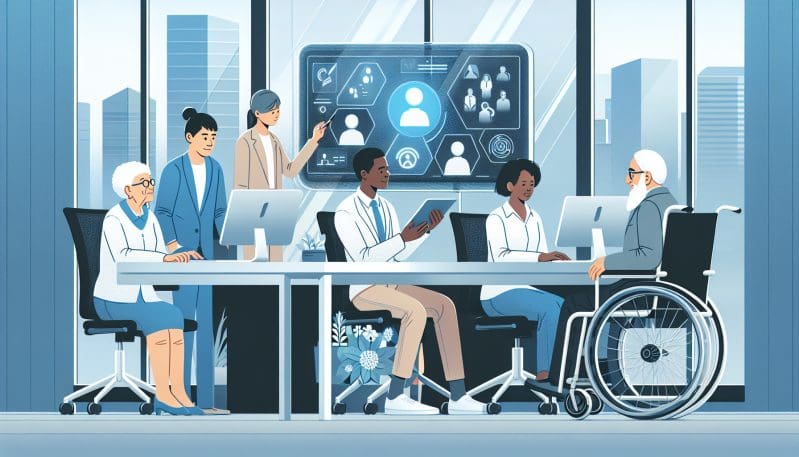Bridging the Generational Divide: Innovative Strategies to Integrate the Aging Workforce in the Modern Workplace
- Home
- Bridging the Generational Divide: Innovative Strategies to Integrate the Aging Workforce in the Modern Workplace

- Vishal Kumar
- March 8, 2024
- 0 Comments
As the workplace evolves with advancements in technology and dynamic business landscapes, the generational divide within the workforce persists as a point of concern. Older workers, armed with years of valuable experience and wisdom, are finding themselves on the periphery of this transformation. Their expertise, once held in high regard, now clashes with the fast-paced, technology-driven environment that favors the youth. However, the narrative need not be one of exclusion or obsolescence. In reality, the integration of the aging workforce is not only attainable but of paramount importance for sustainable business growth and societal development. Here we explore various strategies to harmonize the potential of experienced professionals with the needs of the modern workplace.
Businesses can adapt their work practices to be more inclusive of the aging workforce by implementing flexible working arrangements and age-friendly policies. This includes offering part-time, remote, or job-sharing opportunities, which can be particularly beneficial to those who may need to transition into retirement gradually or balance caregiving responsibilities. Workspaces could be redesigned to be more ergonomically suitable for older workers, and health and wellness programs can be tailored to meet their specific needs.
Mentorship is a traditional, time-honored method of knowledge transfer, yet it can gain new life when applied across generations. Establishing mentorship programs where seasoned professionals guide younger colleagues can result in the transfer of critical industry knowledge, ethics, and soft skills that are not easily replicated in a classroom setting. Conversely, reverse mentorship programs, wherein younger employees mentor their older counterparts, particularly in areas like technology, social media, and current market trends, can help in bridging the digital divide and fostering mutual respect and understanding.
Training programs for older workers must be re-envisioned to ensure inclusivity and effectiveness. Utilizing mixed reality tools like virtual or augmented reality can simulate real-world scenarios for hands-on learning without the risks associated with on-the-job training. Personalized learning paths that account for an individual’s pace and learning style can also make the training process more accommodating. By adopting a more customized approach, companies can maximize the potential of their aging workforce.
The economic and social benefits of an integrated multi-generational workforce are profound. Economically, companies that leverage the talents of older workers can address skill shortages, enhance problem-solving with diverse perspectives, and potentially reduce turnover. Socially, such integration promotes a sense of purpose and community among older workers, which can lead to improved mental health and well-being, ultimately affecting the wider community positively.
Companies that have successfully adapted their strategies to support older employees serve as exemplary models. Organizations like BMW have reaped the benefits of their ‘Today for Tomorrow’ program, which involved redesigning production lines to be more age-friendly, resulting in a significant increase in productivity. Similarly, Michelin has implemented a ‘Senior Expert’ program that taps into the knowledge of experienced workers who have retired, utilizing them as consultants and trainers, thus retaining valuable intellectual capital.
In conclusion, integrating the aging workforce into the modern workplace is not just a necessity but an opportunity for companies to innovate and thrive. It requires strategic commitment, adaptability, and an inclusive mindset. Businesses that recognize this paradigm and act upon it will not only gain a competitive edge but also contribute to a more equitable and sustainable future for all generations within the workforce.
